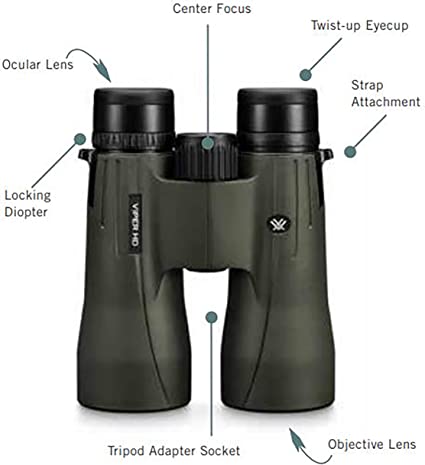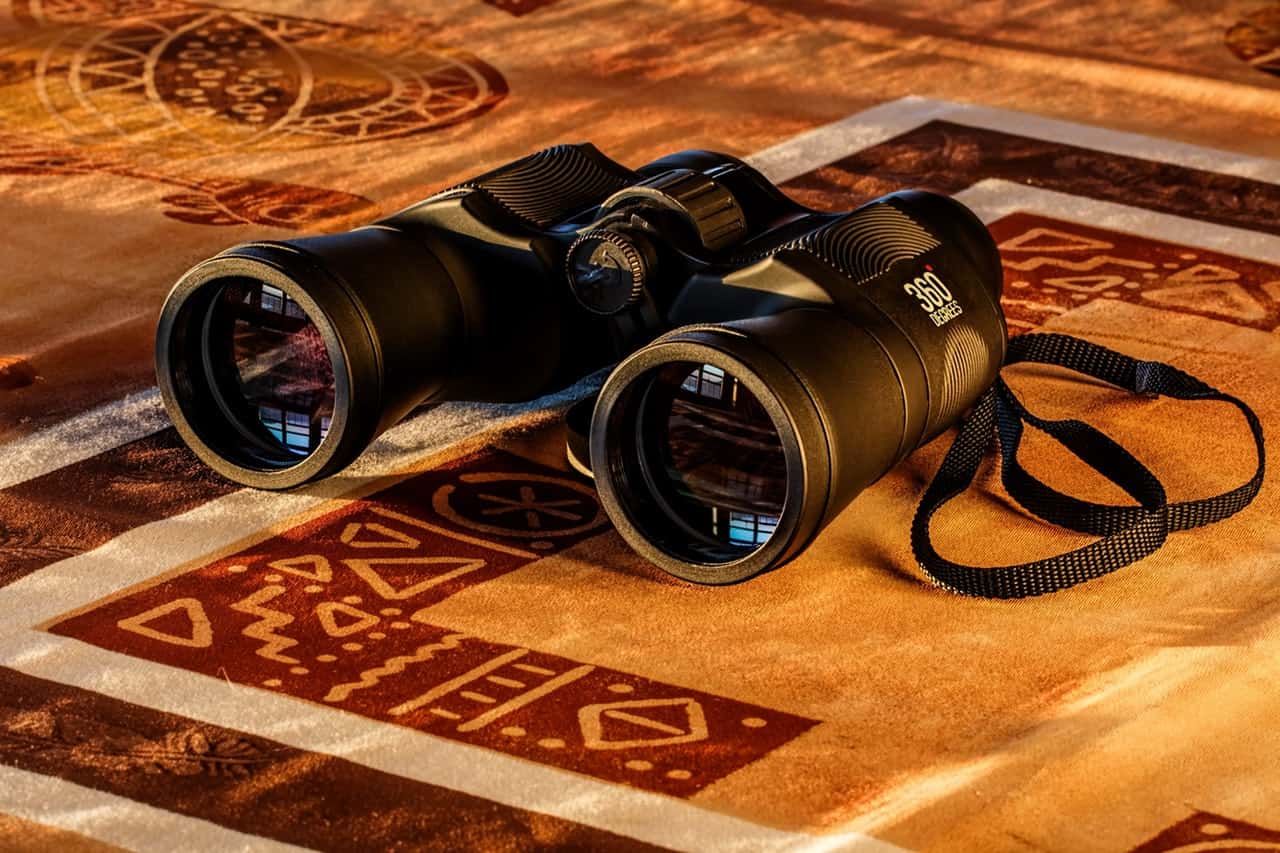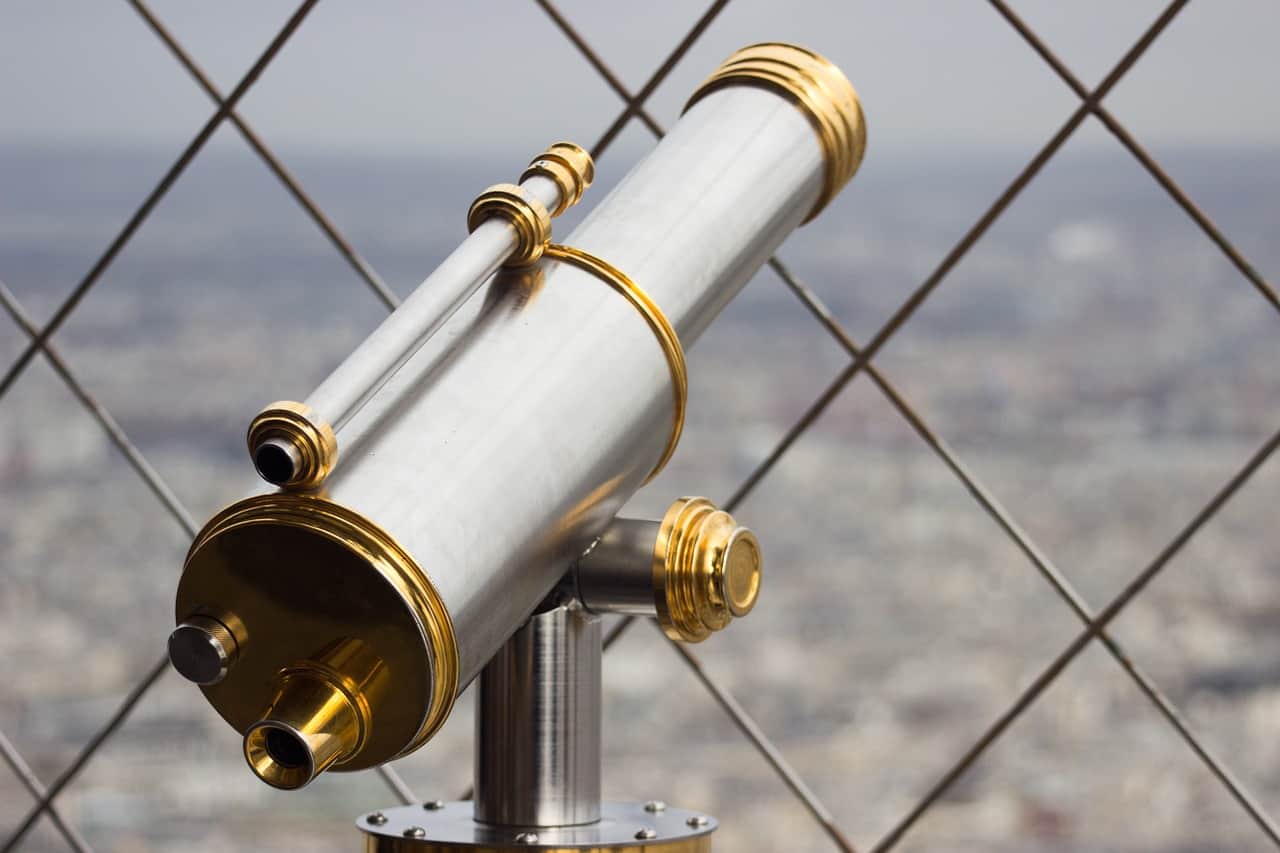Binoculars are quite handy for bird watching, hunting, star gazing or sightseeing even as a beginner. You might not bother looking into the product specifications and blindly buy any product, believing that more or less all binoculars are suitable for whatever use you have of them.
Does that sound familiar? If you haven’t bothered with binocs’ specifics ever, now is the time to do so. When it comes to tech equipment, it is essential to know the basics of the product in order to buy something that fits your required usage and personal choice.
You might ask why is that even necessary?
Well, firstly, you don’t want to waste your money on a bad set. Secondly, with the constant improvement in technology, binoculars over time have also come to serve a variety of functions. Many are built for specific usage, so knowing your own type is highly important for a good experience.
In this article, we will not only tell you about mistakes to avoid when choosing binoculars as a beginner but also build a basic foundation of the types, nomenclature, features and specifications of binoculars.
Read on to find out more about binoculars, so that the next time you go for buying one, you have the perfect knowledge on what to look for.
Types of Binoculars:
Binoculars vary in different specifications depending on the particular product or brand. But the major and simplest distinction between a pair of binoculars is the focus of the lens. On that basis, there are two types of binoculars available in the market you need to know as a beginner.
Central Focusing (CF): A binocular with a central focusing knob to adjust the clarity of an image for a more clear, bright and crisp view. It is much easier and preferable to use since you do not have to hassle over-focusing on each eye individually.
Individual Focusing (IF): A binocular that has separate focusing knobs for both eyes. This is preferable for astronomical viewing like stargazing, etc. because better focus and image clarity is required for such telescoping.
The binoculars also vary depending on the prisms used for the reflection of light within them. I will also discuss the types of prisms used in the binoculars for your basic understanding.
Features and Specifications of Binoculars:
Before we move on to common mistakes to avoid when choosing binoculars separately, you should understand the general features and specifications of Binoculars first.
This will help you to know what to look for when choosing binoculars, and the mistakes to avoid when choosing will only be a bonus add-on to your understanding and knowledge.
Let us now look at some of the general features and specifications of Binoculars.
Objective lens is the larger or front lens of the binoculars. Their diameter is measured in millimeters. The smaller lens (the one closer to your eyes) that you use to look through a pair is called the ocular lens.
The objective lens determines the image quality. The larger lens gives a brighter and crisper image because they allow more light to enter the lens. Binoculars with a higher objective number are also heavier to carry.
Magnification is the number of times an image is magnified. For example, in an 8×42 binocular, 8 is the magnification and 42 is the objective lens’ diameter/size (mm).
So, the image viewed in 8 x 42 is magnified or ‘looks larger/closer’ up to 8 times while the diameter of the objective lens is 42 mm.
Magnification affects three basic factors:
- Stability
- Field of View
- Image Brightness
Although binoculars with higher magnification and objective lens diameter might seem like a good idea as a beginner, but also keep in mind that a higher magnification offers a limited or narrow field of view, as well as the risk of an unstable, blurry image.
So, if you want a larger field of view, go for a moderate magnification that does not compromise on image clarity and result. Otherwise, you might also experience eye fatigue if the image is compromised.
- Binocular size depends on the objective lens’ size. We’ll briefly discuss three sizes of binoculars in broad terms. You should choose a type that suits your need and personal choice.
- Compact – light-weight, portable, easier to carry and use due to their small, compact size but not recommended for use over an extended period. (Common Specs: 8×10, 10×25)
- Mid-size – moderately-sized, a bit heavier than compact ones but best for all-around use of binoculars, be it wildlife, outdoors, or sports’ use. (Common Specs: 7×35, 10×32)
- Full-size – larger than mid-sized ones, they capture more light, even in dim/ low light situations and are much steadier with better image quality. They are highly recommended for extended use. (Common Specs: 8×42, 10×50)
According to Nikon, the recommended magnification is upto 12x.
- Exit Pupil is the measurement that is yet another factor in determining image quality. It is the virtual aperture in the lens. A larger exit pupil gives a better and brighter image result, even in low-light situations.
Exit Pupil can be calculated by dividing Objective number by the Magnification number, e.g.: – in 8×10 binocular, 10 will be divided by 8 for calculating Exit Pupil measurement (mm).
- Prism types used in binoculars are usually two for inversion/reflection of the image.
- Porro prisms give a wider field of view by not aligning the objective lens with the eyepieces, in a Z-shaped configuration. They give a brighter image and are preferably easier to use.
- Roof prisms align the eyepieces and objective lens together. This gives a narrower, more focused and more compact image.
Beginner Mistakes to Avoid When Choosing Binoculars
These are some of the most common mistakes to avoid when choosing a set of binoculars.
Mistake #1 – Buying a Cheap Set of Binoculars
- Buying a cheap set of Binocs; I don’t recommend a hefty-on-the-pocket pair, but a cheap one will not offer many advanced or good features. You may not get a good imagery experience with the cheap ones. Better invest in a good pair for once!
Mistake #2 – Buying High Magnification Binoculars
- Too powerful magnification can cause image shake, low-quality image and narrow field of view. Use a tripod stand for a stable view.
- Fixed magnification is better than a zoom feature if a pair doesn’t guarantee perfect synchronization of both telescopes (lenses) to give a better image.
- Diopter Adjustment and Focusing knob are important for sharper focus and fine-tuning to avoid vignetting (blacking out from corners) or blurry image.
Buy a pair with “locking” diopters to avoid the hassle of readjusting focus.
Mistake #3 – Choosing a Binocular with a Digital Camera
- Binoculars with a Digital Camera; these “fancy” digicams that come with binoculars, especially cheap ones, give a blurry result even if the image is HD in real.
- Digi binning/Digiscoping is an alternative where an adapter allows you to connect your smartphone/camera to your binocs, and record or capture images with better quality.
Mistake #4 – Buying a Binocular without Rubber Eyecups (for Eye-Glass Wearers)
- Choose a pair with rubber eyecups that can be preferably folded/retracted and are detachable. Rubber eyecups result in a brighter image as more light enters into the ocular lens. They also provide better eye relief for eyeglass wearers.
- Eye relief is the distance between your eyes and the binocs to avoid eye fatigue. Longer eye relief range of 5mm-23mm is preferred. For eyeglass wearers, the preferred eye relief is 15mm or longer.
Mistake #5 – Not Waterproof/Weather Resistant Binocular
Your set of binocs is not ‘weather-proof’ or ‘weather-protected’; this could be detrimental in severe weather conditions and damage your pair. Buy a pair that is not only weather-proof (rain, wind, snow) but also water-proof. This will also keep out dust particles and protect binocs from damage.
Mistake #6 – Not Multi-Coated Lenses
Choose a “fully multi-coated” pair; usually, cheap binoculars do not offer multiple layers of the protective coating of the lenses. Rather than ‘coated’, ‘multi-coated’ or ‘fully-coated’, look for ‘fully multi-coated.’
- Tinted binoculars: in advanced and higher-end binoculars, tinted lenses could actually protect lenses and provide better quality images. But with cheap sets, avoid tinted coatings as they might do more harm than good!
- Anti-reflection coatings: ‘fully multi-coated’ lenses are anti-reflective and focus light on the focal point more accurately. This provides a better image result without causing eye fatigue.
Final Thoughts
These are some of the most common mistakes to avoid as a beginner when choosing a durable and long-lasting pair of binoculars.
Choosing a good pair of binoculars is essential for not only viewing through the pair but also protecting your eyes from strain, fatigue and irritation. So, invest in a pair that is moderately ranged, unless you are an expert and want the pair for a specific use.
You definitely won’t regret buying a good pair for an enjoyable experience! Hopefully, this article covered all major and basic aspects to aid you in choosing a good pair and mistakes to avoid when choosing binoculars.


An optics enthusiast – I love bird watching as well as wildlife. Originally from South Africa, I moved to the UK at a young age. I love reviewing the latest binoculars as well as traveling. I work as a comms consultant during the day. My plan is to travel across the world so building up to that goal.





